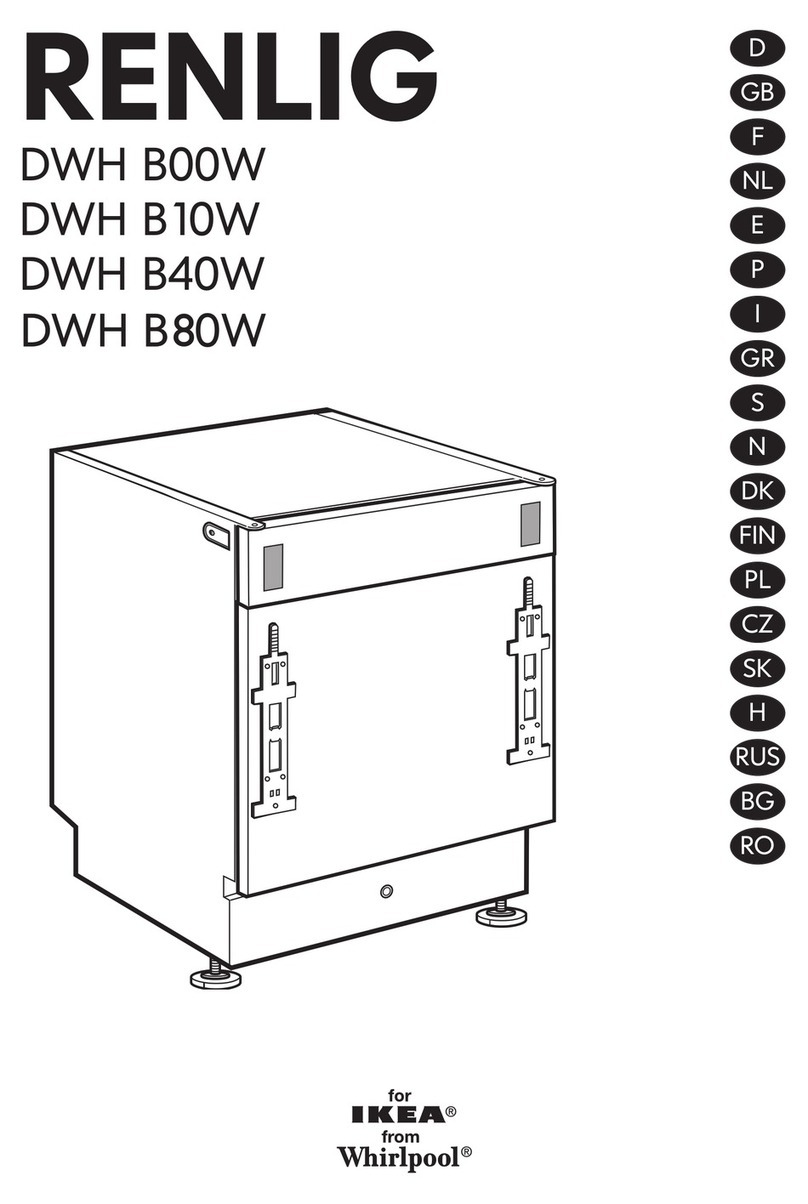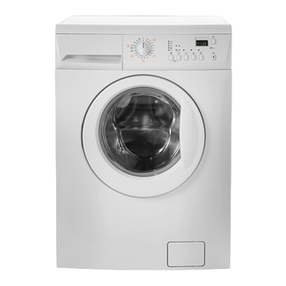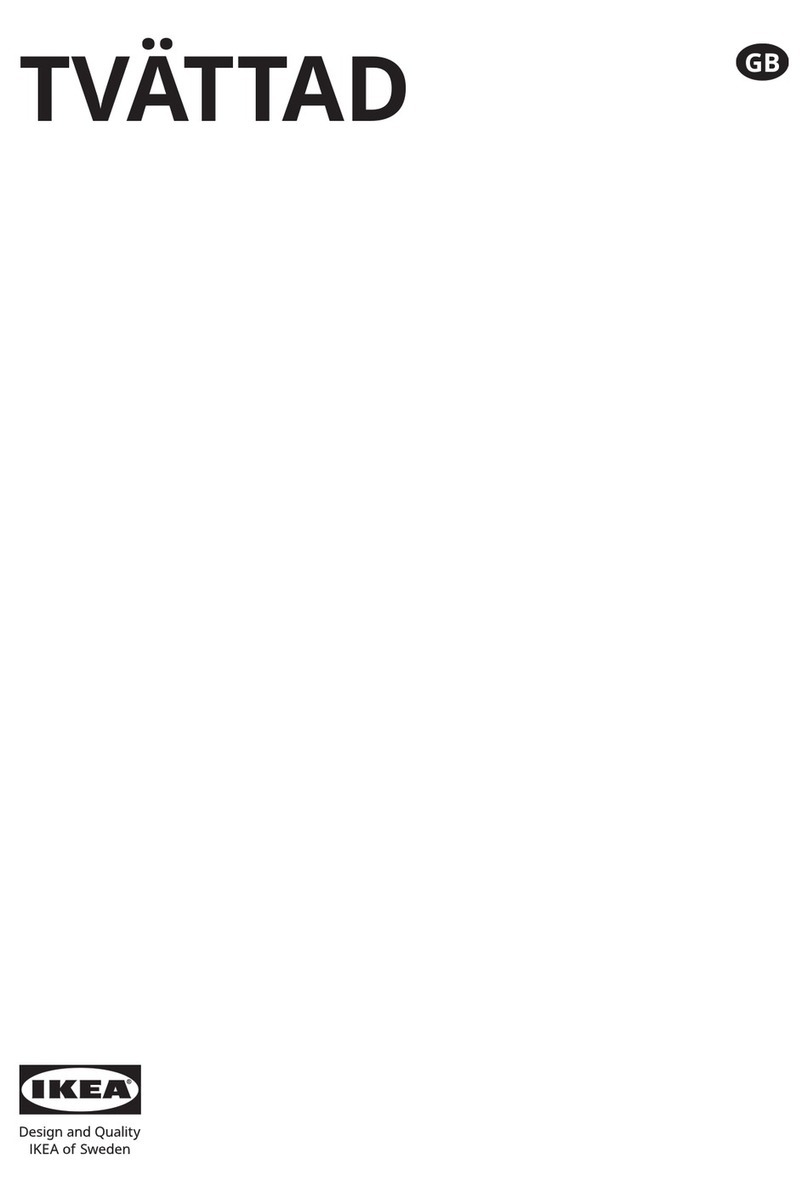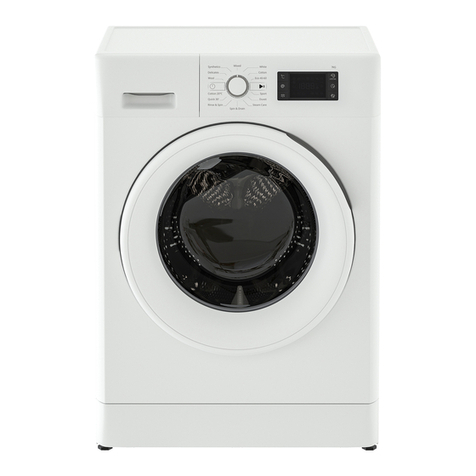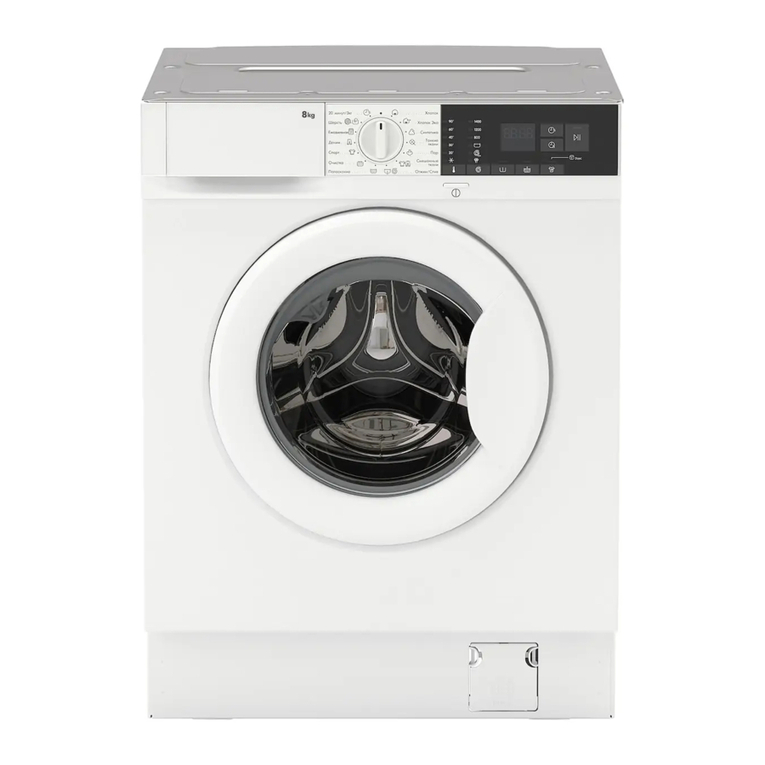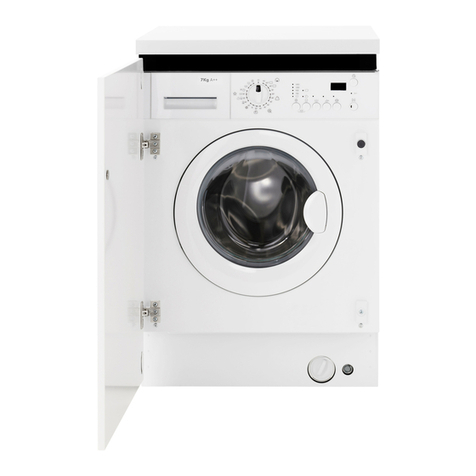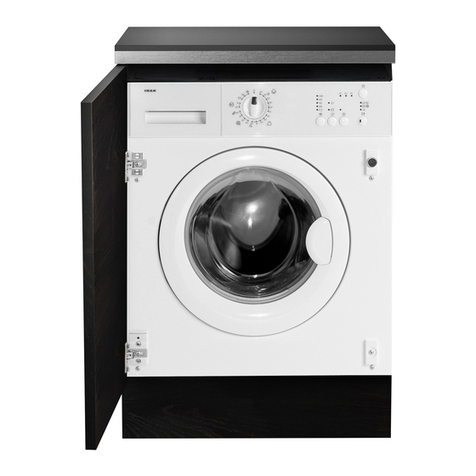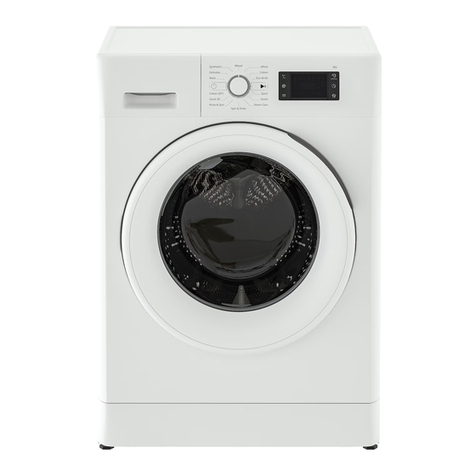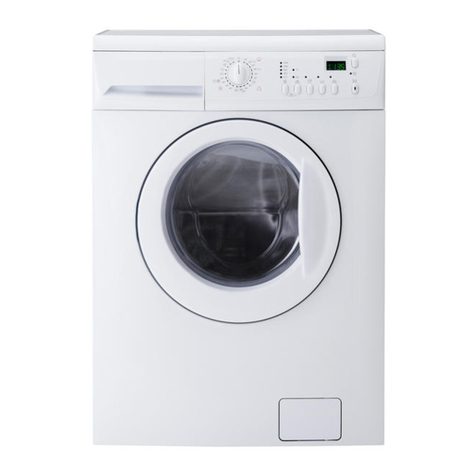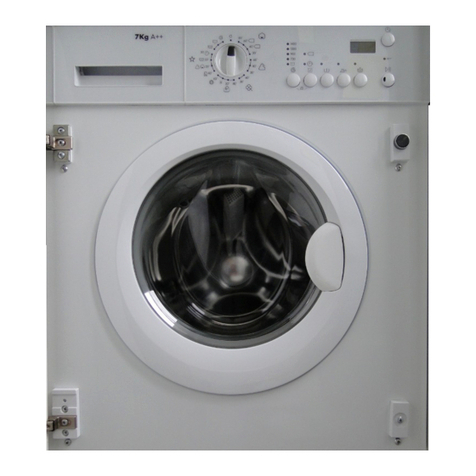6
stable, resistant to heat and clean.
•Make sure that air can circulate
freely between the appliance and the
oor.
•Adjust the feet to arrange the neces-
sary space between the appliance
and wall-to-wall carpet.
•Do not install the appliance in a point
where the door cannot be opened
fully.
Electrical connections
•The appliance must have an earthing
system.
•Always use a power socket with a
properly installed protection contact.
•Check that the data on the appli-
ance’s data plate matches that of the
electrical system. If not, contact an
electrician.
•Do not use multiple sockets and
extensions.
•
• Insert the plug into the power socket
only once the appliance has been in-
stalled. Verify that the plug remains
accessible after installation.
•Do not touch the power cord or plug
with wet hands.
•Do not pull on the power cord to
disconnect the appliance. Always pull
the plug instead.
Water supply connections
•Be careful not to damage the water
loading and drain hoses.
•Before connecting the appliance to
new hoses or hoses that have not
been used for a long time, run the
water until it becomes clear.
ENGLISH
for the necessary support.
and/or an authorized service partner
appointed After Sales Service Provider
must be replaced, contact our IKEA
Be careful not to damage the plug
and power cord. If the power cord
rized service partner.
les Service Provider and/or an autho-
authorised IKEA appointed After Sa-
to be used.
formation on the suitable accessories
an authorized service partner for in-
After Sales Service Provider and/or
leaks. Contact the IKEA appointed
•When using the appliance for the
rsttime,makesurethatthereare
no water leaks.
Use
BEWARE! There is a risk of injury,
electricshock,re,burnsordam-
age to the appliance.
•Use the appliance exclusively in a
domestic environment.
•Observe the safety instructions ap-
pearing on the detergent’s package.
• Donotplaceorkeepammable
liquidsormaterials,noreasilyam-
mable objects, on the appliance,
inside the latter or in the immediate
vicinity.
•Remove all metal objects from laun-
dry.
•Do not place a container beneath the
appliance to collect possible water
•Do not touch the glass of the door
when a wash cycle is under way. The
glass may be hot.
Technical assistance
•To repair the appliance contact the
•Only use original spare parts.


